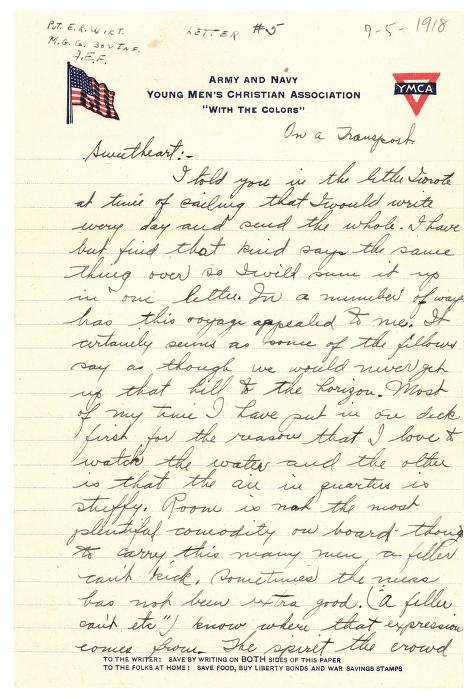




Advanced Search
| Online Collection |
|
|||||||||||||||||||||
|
Edward Wirt wrote this letter on one of his first days aboard the transport that was taking him from America to England. His unit, the 302nd Infantry Regiment of the 76th Division, was one of the first to be shipped overseas. The conditions aboard the transport were crowded and stuffy. Beyond those discomforts, though, the largest concern about crossing the Atlantic was the presence of German submarines. Germany used submarines, a new tool of war, very effectively in World War I. By October, 1917 it had sunk more than 8 million tons of shipping. But the British instituted the convoy system (large groups of merchant ships protected by destroyers) and by the time of this letter, the threat had substantially lessened. On the last page of this letter Wirt refers to a censor: to prevent sensitive information from leaking out, censors, usually junior officers attached to the unit, had to read every piece of outgoing mail and cut out offending words or sentences.
|
WWI letter to Emily Gladys Bartlett
|
| |
Home | Online Collection | Things
To Do | Turns
Exhibit | Classroom | Chronologies | My
Collection
About This Site | Site Index | Site Search | Feedback


